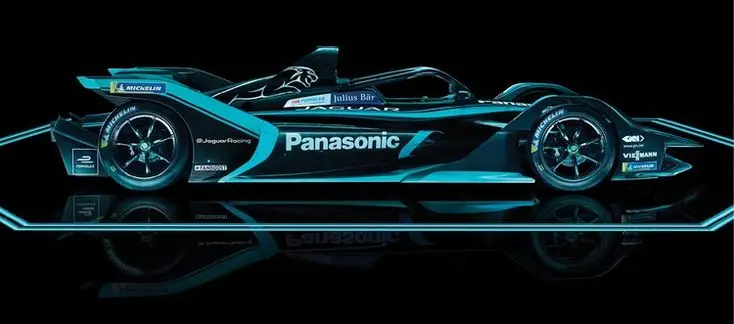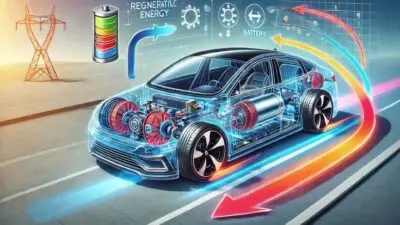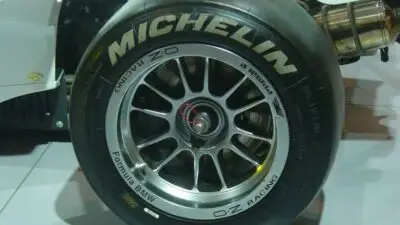Formula E has transformed from an experimental racing series into a major force that’s reshaping motorsports and automotive technology. Since launching in 2014, this all-electric championship has proven that electric racing is no longer just a glimpse into the future—it is the now, with top speeds now exceeding 200 mph and technology that directly influences road cars.

The series serves as a real-world testing ground where breakthrough technologies like solid-state batteries, AI-driven race strategies, and advanced energy recovery systems are developed and refined before making their way to consumer vehicles. Major manufacturers including Porsche, Jaguar, and Nissan invest heavily in Formula E because the innovations developed on track translate directly to their electric vehicle programs.
Formula E stands as the first carbon-neutral racing series, setting sustainability standards that traditional motorsports are now trying to match. The championship races on temporary street circuits in major cities worldwide, bringing high-tech electric racing directly to urban centers while demonstrating the future of clean transportation.
Key Takeaways
- Formula E serves as a crucial testing ground for electric vehicle technologies that eventually reach consumer cars
- The series has achieved carbon neutrality while pushing electric racing speeds beyond 200 mph with Gen3 cars
- Major automotive manufacturers use Formula E to develop and showcase innovations in battery technology, energy management, and sustainable racing practices
What Is Formula E and Electric Racing?

Formula E represents the pinnacle of electric motorsport, featuring single-seater racing cars powered entirely by electricity. Major manufacturers like Porsche, Jaguar, and Mercedes compete in this championship that combines cutting-edge technology with sustainable racing practices.
The Concept of Electric Racing Series
Formula E is the world’s premier all-electric motorsport championship, officially known as the ABB FIA Formula E World Championship. The series launched in 2014 to promote sustainable mobility and advance electric vehicle technology.
Electric racing cars compete on temporary street circuits in major cities worldwide. These include Paris, New York, Hong Kong, and London. The urban format brings motorsport directly to fans in city centers.
The cars use advanced lithium-ion battery packs as their sole power source. Current Gen3 cars can reach speeds exceeding 200 mph and recover over 40% of their energy through regenerative braking systems.
Formula E features unique elements like Attack Mode and FanBoost. Attack Mode gives drivers extra power for overtaking. FanBoost allows fans to vote for their favorite drivers to receive additional energy during races.
The championship serves as a competitive platform to test and develop electric technology for future road cars. Racing innovations often transfer to consumer electric vehicles.
Comparison With Formula 1
Formula E and Formula 1 differ significantly in their approach to motorsport. Formula 1 uses hybrid power units with internal combustion engines. Formula E relies completely on electric power.
Key Differences:
| Aspect | Formula E | Formula 1 |
|---|---|---|
| Power Source | 100% Electric | Hybrid V6 Turbo |
| Top Speed | 200+ mph | 230+ mph |
| Race Locations | City Street Circuits | Permanent Race Tracks |
| Race Duration | 45 minutes + 1 lap | Distance-based (190+ miles) |
| Sustainability | Carbon Neutral | Working toward Net Zero by 2030 |
Formula E races last 45 minutes plus one lap rather than a set distance. This creates different strategic challenges for teams and drivers. Energy management becomes crucial for race success.
The sound experience differs dramatically between the series. Formula 1 produces loud engine noise. Formula E cars run much quieter, allowing fans to hear tire squealing and other race sounds.
Formula E has attracted several manufacturers who previously competed in Formula 1, including Mercedes and Audi.
Major Manufacturers in Formula E
Top automotive manufacturers view Formula E as essential for electric vehicle development. The series attracts brands committed to electrification strategies.
Current and Former Manufacturers:
- Porsche – Entered in 2019, focusing on electric performance technology
- Jaguar – Competing since 2016, emphasizing luxury electric mobility
- Nissan – Joined in 2018, leveraging expertise from the Leaf electric car
- DS Automobiles – French luxury brand with multiple championship wins
Former Participants:
- Mercedes – Competed from 2019-2022, won two consecutive championships
- Audi – Founding manufacturer, competed from 2014-2021
- BMW – Participated from 2018-2021, developed i-series technology
These manufacturers use Formula E to test battery technology, energy management systems, and electric powertrains. Racing conditions provide extreme testing environments for electric components.
The competitive nature ensures rapid technological advancement. Teams must balance speed, efficiency, and reliability within strict technical regulations.
Formula E serves as a proving ground where innovations often transfer to road cars. Manufacturers gain valuable data about electric vehicle performance under racing stress.
Evolution and Growth of Formula E

Formula E transformed from an experimental electric racing concept into a major motorsport championship through three distinct generations of cars. The series progressed from basic electric vehicles to high-performance Gen3 cars capable of speeds over 200 mph, establishing itself as the premier electric racing series.
The Early Years and Milestones
Formula E launched in 2014 with a clear mission to promote sustainable mobility and advance electric vehicle technology. The inaugural season featured Gen1 cars that required drivers to switch vehicles mid-race due to limited battery capacity.
These early electric vehicles could reach speeds of 140 mph. The races took place on temporary street circuits in major cities like Beijing, London, and Los Angeles.
The championship faced skepticism from traditional motorsport fans. Battery technology limited race distances to about 25 minutes. Teams had to use two cars per driver during each race.
The series grew into a global phenomenon by attracting major automotive manufacturers. Audi, BMW, Mercedes-Benz, and Porsche joined the championship to develop electric vehicle technology.
Gen2 Era: Performance and Competitiveness
The Gen2 cars arrived in 2018 and eliminated the need for mid-race car swaps. These electric vehicles featured improved battery technology that lasted entire race distances.
Key Gen2 improvements:
- Single car per race
- 250 kW maximum power output
- Enhanced aerodynamics
- Longer race durations
The Gen2 era established Formula E as a serious racing championship. Lap times improved significantly on street circuits around the world. Fan interest grew as races became more competitive and strategic.
Major cities like Paris, New York, and Hong Kong hosted races on challenging temporary street circuits. Television viewership increased as the racing became more intense and unpredictable.
The Rise of Gen3 Cars
Gen3 cars debuted as the world’s fastest and most sustainable electric race cars in 2022. These vehicles represent the pinnacle of electric racing technology with speeds exceeding 200 mph.
The Gen3 platform introduced revolutionary features. Regenerative braking on both front and rear axles became standard. Power output increased to 350 kW during qualifying sessions.
Gen3 cars achieved net zero carbon status, making them the most environmentally friendly race cars ever built. The bodies use sustainable materials like flax fibers.
The Gen3 Evo represents the latest evolution with the introduction of Pit Boost technology in 2025. This innovation allows drivers to gain extra power through strategic pit stops on street circuits.
Breakthrough Technologies Shaping the Future

Formula E continues to push the boundaries of electric vehicle innovation through cutting-edge battery systems, advanced energy recovery methods, increased power capabilities, and revolutionary charging solutions. These technological developments are transforming both racing performance and the broader electric vehicle industry.
Battery Technology Advancements
Current Formula E cars use 52 kWh battery packs that power the entire race without mid-race car swaps. The next generation of Formula E technology will likely feature solid-state batteries instead of traditional lithium-ion batteries.
Solid-state battery technology offers several advantages:
- Higher energy density for longer racing distances
- Faster charging capabilities
- Improved safety with reduced overheating risks
- Better performance in extreme temperatures
Major manufacturers like Toyota, BMW, and Porsche are investing heavily in solid-state research. These batteries could eliminate range anxiety and enable longer, more intense races.
Battery capacity improvements continue to drive the sport forward. Gen3 cars already demonstrate significant advances over earlier generations. Future developments may include recyclable battery materials and second-life applications for used racing batteries.
The shift from lithium-ion batteries to solid-state technology represents one of the most significant upcoming changes in Formula E.
Energy Recovery and Regenerative Braking
Formula E cars currently recover over 40% of their energy through regenerative braking systems during races. This makes them the most efficient racing cars ever created by the FIA.
Current regenerative braking capabilities:
- Rear-wheel energy recovery during deceleration
- Real-time energy management systems
- Strategic energy deployment through Attack Mode
Future energy recovery systems may expand to include front-wheel regenerative braking. This advancement would capture energy from all four wheels during braking events.
Enhanced energy recovery systems could potentially eliminate conventional brakes entirely. Cars would rely completely on regenerative systems for deceleration.
Advanced energy management allows drivers to optimize power usage throughout races. Teams use real-time data to maximize energy recovery while maintaining competitive lap times.
These systems directly influence road car development. Manufacturers like Nissan have enhanced battery capacity by 181% through Formula E participation.
Power Output and Performance
Gen3 Formula E cars produce impressive performance figures that continue to improve each season. Current cars reach top speeds exceeding 322 km/h (200 mph) on suitable circuits.
Performance specifications include:
- Maximum power output of 350 kW (469 hp)
- 0-100 km/h acceleration in under 2.8 seconds
- Lightweight chassis design for optimal efficiency
The power advancements in Gen4 cars are expected to narrow the performance gap between Formula E and Formula 1. This could make electric racing even more competitive and exciting.
Acceleration improvements come from better power delivery systems and reduced vehicle weight. Engineers focus on maximizing power output while maintaining energy efficiency throughout races.
Formula E demonstrates that electric vehicles can deliver thrilling performance without sacrificing sustainability. Each generation pushes the limits of what electric powertrains can achieve.
Flash Charging and Quick Pit Stops
Traditional Formula E races currently run without pit stops for charging. However, future racing formats may incorporate ultra-fast charging technology during brief pit stops.
Flash charging developments include:
- Charging times under 30 seconds
- High-power charging systems
- Battery swapping technology as an alternative
Teams are exploring battery-swapping systems where cars could exchange depleted batteries for fully charged units. This approach could enable longer race formats and different strategic options.
Dynamic wireless charging represents another breakthrough possibility. Cars could receive small energy bursts while racing over designated charging zones on track.
These charging innovations could eliminate current range limitations. Races might feature multiple pit stops with strategic charging decisions.
The technology developed for Formula E charging systems directly benefits consumer EV charging infrastructure. Faster charging capabilities improve the practicality of electric vehicles for everyday use.
Gen4 and the Next Generation of Racing Cars

Formula E’s Gen4 cars represent a massive performance jump with 600kW power output and permanent four-wheel drive. The series will incorporate advanced sustainable materials and expanded battery technology to support longer race formats starting in 2026.
Gen4 Performance Leap
The Gen4 cars deliver almost double the power compared to current vehicles. Power output jumps from 350kW to 600kW, while regeneration capability increases to 700kW.
Key Performance Upgrades:
- Permanent four-wheel drive system
- 600kW maximum power output
- 700kW regeneration capacity
- Enhanced cornering speeds
- Higher top speeds on city circuits
The cars will be Formula E’s first open-wheel series with exclusively four-wheel-drive vehicles. This permanent all-wheel drive replaces the current system that only activates during attack mode.
Battery performance improvements enable these power increases. The Gen4 features a larger, heavier battery system to support the enhanced energy demands.
Total vehicle weight increases to 1016kg compared to the current 859kg Gen3 Evo cars. This weight gain accommodates the bigger battery pack needed for sustained high-power operation.
Advancements in Sustainable Materials
Gen4 development focuses heavily on sustainable materials throughout the vehicle construction. Manufacturers must work within strict cost caps of €29 million over two years while maximizing efficiency.
The powertrain components use advanced lightweight materials to offset battery weight increases. Teams can develop unique powertrain designs within the 100kg maximum weight limit for these components.
Battery technology incorporates more sustainable cell chemistry and packaging materials. The enhanced regeneration system captures more energy during braking and coasting phases.
Racing teams transfer these material innovations directly to consumer electric vehicles. The constant efficiency improvements help future EV development and increase adoption rates.
Chassis construction employs recycled carbon fiber and bio-based composites where possible. These materials maintain structural integrity while reducing environmental impact.
Enhanced Race Durations and Formats
The improved battery performance enables new race formats with longer durations. Current races require careful energy management throughout the event.
Gen4 cars can sustain higher power output for extended periods. This capability allows race organizers to explore different circuit configurations and race lengths.
Potential Format Changes:
- Extended race distances
- Multi-heat competitions
- Varied circuit layouts
- Sprint and endurance combinations
Some circuits may require modifications to handle the increased speeds safely. The cars will be so potent that Formula E may need different circuits for proper safety and entertainment.
Battery technology supports these format expansions without mid-race vehicle changes. The original Formula E cars required driver swaps to complete races.
Race formats can now emphasize pure performance over energy conservation strategies. This shift creates more exciting racing while showcasing electric vehicle capabilities.
Formula E’s Impact on Sustainability and Clean Energy

Formula E has established itself as the world’s first all-electric racing championship, fundamentally transforming motorsport through sustainable racing practices, energy efficiency innovations, and comprehensive renewable energy integration. The championship achieved net zero carbon status by offsetting all emissions since its inception through strategic renewable energy investments.
Sustainable Racing Practices
Formula E implements comprehensive sustainable racing practices across its entire operation. The championship requires all catering to include a minimum of 30% vegetarian or vegan offerings while sourcing food locally when possible.
Teams must account for the complete lifecycle of cars and batteries in their environmental footprint. The championship promotes reuse and recycling of vehicle components to minimize waste.
Formula E provides recycling facilities at all events aligned with local infrastructure and waste management systems. The series discourages spectator parking and actively promotes public transportation through pre-event communications.
More than 290,000 liters of water have been distributed through hydration stations since Season 5. This initiative prevented over 585,000 single-use plastic bottles from reaching event sites.
Energy Efficiency Initiatives
The championship targets 100% renewable energy usage for all events. Car charging operates primarily through renewable grid power across the entire racing series.
When renewable grid power remains unavailable, Formula E utilizes Hydrogenated Vegetable Oil made from used cooking oil. This alternative fuel source maintains the championship’s commitment to clean energy.
Business travel efficiency measures include:
- Limiting attendance to race-critical staff only
- Grouping personnel on shared flights
- Prioritizing train travel over air transport
- Using electric or hybrid ground transportation vehicles
Freight transport represents the largest environmental impact. Formula E collaborates directly with logistics providers to identify reduction opportunities including biofuel adoption for road and sea freight operations.
Integration of Renewable Energy
Formula E became the first motorsport to achieve net zero carbon status in Season 6 based on 2020 definitions. The championship invested in renewable energy projects across race markets to offset all unavoidable emissions.
The series embeds sustainability throughout its procurement process. All suppliers and partners receive clear communication about Formula E’s environmental commitments and requirements.
Electric energy systems power the entire racing infrastructure when renewable grid connections exist. The championship’s energy management strategy prioritizes renewable sources while maintaining operational reliability.
Renewable energy integration includes:
- Solar power installations at select venues
- Wind energy partnerships in host cities
- Grid-scale renewable energy project investments
- Carbon offset programs in racing markets
Formula E’s holistic sustainability approach considers environmental, social, and economic impacts through comprehensive management systems and local community programs.
Influence on the Broader Electric Vehicle Market

Formula E acts as a testing ground where racing innovations directly improve everyday electric cars. The sport drives technology advances in batteries, energy management, and fan experiences that reshape how people view electric mobility.
Motorsport Innovation and Technology Transfer
Formula E serves as a real-world laboratory where racing developments directly influence consumer vehicles. Teams push battery technology to its limits during races, creating breakthroughs in energy density and charging speed.
Battery Management Systems developed for Formula E cars now appear in consumer electric vehicles. These systems optimize power delivery and extend battery life through advanced software controls.
Racing teams also perfect regenerative braking technology under extreme conditions. This energy recovery system captures power during braking and feeds it back to the battery, a feature now standard in most electric cars.
Key Technology Transfers:
- Lightweight battery designs
- Fast-charging solutions
- Advanced energy recovery systems
- Power management software
Major automakers like Porsche, Jaguar, and Nissan use Formula E to test innovations before bringing them to market. The technology developed in racing’s high-pressure environment leads to longer ranges and shorter charging times for consumer vehicles.
Growth of Electric Mobility
Formula E racing takes place on city streets rather than isolated race tracks. This urban focus mirrors real-world driving conditions where most electric vehicles operate daily.
The sport breaks down misconceptions about electric vehicle performance. Racing showcases that electric cars can deliver excitement and speed without sacrificing environmental benefits.
Formula E’s global platform raises awareness about electric mobility among mainstream audiences. Television coverage and social media exposure introduce millions of viewers to electric vehicle capabilities.
Market Impact Factors:
- Increased consumer interest in electric vehicles
- Reduced range anxiety through performance demonstrations
- Enhanced public perception of electric car reliability
- Greater investment in charging infrastructure
The championship’s commitment to zero-emission racing aligns with global climate goals. This sustainability message resonates with consumers who want environmentally responsible transportation options.
Augmented Reality and Fan Engagement
Formula E pioneers digital fan experiences that extend beyond traditional motorsport. The series uses augmented reality to display real-time data during races, showing battery levels, power usage, and strategic decisions.
Fanboost allows viewers to vote for their favorite drivers, giving them extra power during races. This interactive feature connects fans directly to race outcomes through mobile apps and social media.
The sport’s digital-first approach attracts younger audiences who grew up with smartphones and gaming. These tech-savvy fans often become early adopters of electric vehicle technology.
Digital Innovation Features:
- Live telemetry data visualization
- Interactive voting systems
- Social media integration
- Virtual reality race experiences
These engagement tools demonstrate how technology can enhance user experiences. Similar innovations now appear in consumer electric vehicles through advanced infotainment systems and connected car features.
Frequently Asked Questions

Formula E continues to push technological boundaries with solid-state batteries and AI-driven strategies while Gen3 cars already reach speeds over 200 mph. Major manufacturers like Porsche and Jaguar are driving innovation as the sport gains global recognition.
What technological advancements are expected for the Gen 4 Formula E cars?
The Gen4 Formula E era will likely introduce solid-state batteries with faster charge times around 2026-2027. These batteries offer higher energy density and increased safety compared to current lithium-ion technology.
Active aerodynamics will allow real-time efficiency adjustments during races. Wings and flaps will automatically adapt based on battery levels and cornering speeds.
AI-driven race strategies will enable teams to make better decisions through real-time data processing. Engineers will use artificial intelligence to predict energy usage and optimize pit stops instantly.
Front and rear regenerative braking systems will maximize energy recovery during races. Current cars only use rear-wheel regeneration, but future designs could recover energy from all four wheels.
Wireless charging technology may allow cars to receive energy while racing over designated charging zones. This innovation could eliminate the need for traditional pit stops entirely.
How do the top speeds of Formula E cars compare to those of F1 cars?
Current Gen3 Formula E cars reach top speeds exceeding 322 km/h (200 mph) on straight sections. Formula 1 cars typically achieve speeds around 370 km/h (230 mph) in optimal conditions.
The speed gap between the two series continues to narrow with each Formula E generation. Gen1 cars from 2014 only reached 225 km/h, while Gen2 cars improved to 280 km/h by 2019.
Formula E cars prioritize energy efficiency over pure speed. The electric powertrains focus on managing battery consumption throughout the race distance.
Formula 1 cars benefit from more powerful engines and advanced aerodynamics designed for maximum speed. However, they consume significantly more energy and produce emissions during races.
What factors are contributing to the increasing popularity of Formula E racing?
Major manufacturers like Porsche, Mercedes, Jaguar, and Nissan have joined the championship. Their involvement brings credibility and investment to the sport.
The series offers more competitive racing with multiple winners each season. Unlike Formula 1, where dominant teams often control championships, Formula E maintains a level playing field.
Street circuit racing brings the action directly to city centers in New York, Paris, and Berlin. Fans can access races more easily compared to traditional racetracks in remote locations.
Formula E is the first carbon-neutral racing series, appealing to environmentally conscious audiences. The sport uses 100% renewable energy and implements comprehensive carbon offsetting programs.
Interactive features like FanBoost and Attack Mode engage audiences directly. These unique race mechanics allow fans to influence race outcomes through voting.
Which teams are currently competing in the Formula E championship?
Eleven teams with two drivers each currently compete in the Formula E championship. Major automotive manufacturers field their own factory teams in the series.
Porsche operates the TAG Heuer Porsche Formula E Team with significant investment in electric racing technology. Jaguar competes as Jaguar TCS Racing, developing innovations for their road car division.
Nissan participates through the Nissan Formula E Team, using racing to advance their electric vehicle programs. DS Automobiles fields the DS Penske team with French automotive expertise.
Independent teams like Envision Racing and Mahindra Racing also compete regularly. These teams often partner with manufacturers for powertrain technology and development support.
Team lineups change periodically as manufacturers enter and exit the championship. The competitive landscape continues evolving as more brands embrace electric racing.
What is the price range for a Formula E race car?
Formula E uses a standardized chassis and battery system to control costs across all teams. Teams purchase the basic car package from the series organizers at regulated prices.
The standardized approach differs significantly from Formula 1, where teams build entirely custom cars. This cost control measure helps smaller teams remain competitive against manufacturer-backed entries.
Teams can develop their own powertrain components including motors, inverters, and software. These custom elements represent the primary areas where teams invest development budgets.
Operating budgets for Formula E teams are substantially lower than Formula 1 equivalents. The cost cap system helps maintain competitive balance while reducing financial barriers to entry.
Exact pricing details are not publicly disclosed due to commercial agreements. Teams typically operate on annual budgets significantly smaller than traditional motorsport categories.
How are car manufacturers influencing the development of Formula E vehicles?
Manufacturers use Formula E as a testing ground for electric vehicle technology development. Racing innovations often transfer directly to consumer electric vehicles.
Porsche applies lessons from Formula E to their Taycan electric sports car development. The company uses racing data to improve battery management and powertrain efficiency.
Jaguar integrates Formula E technology into their I-PACE and other electric road cars. The racing program accelerates development of charging systems and electric drivetrains.
Nissan leverages Formula E experience to enhance their LEAF and ARIYA electric vehicle platforms. Racing helps optimize energy management systems for consumer applications.
Mercedes previously competed in Formula E before focusing resources on Formula 1’s hybrid regulations. Their involvement contributed to EQS electric sedan development during their participation.



